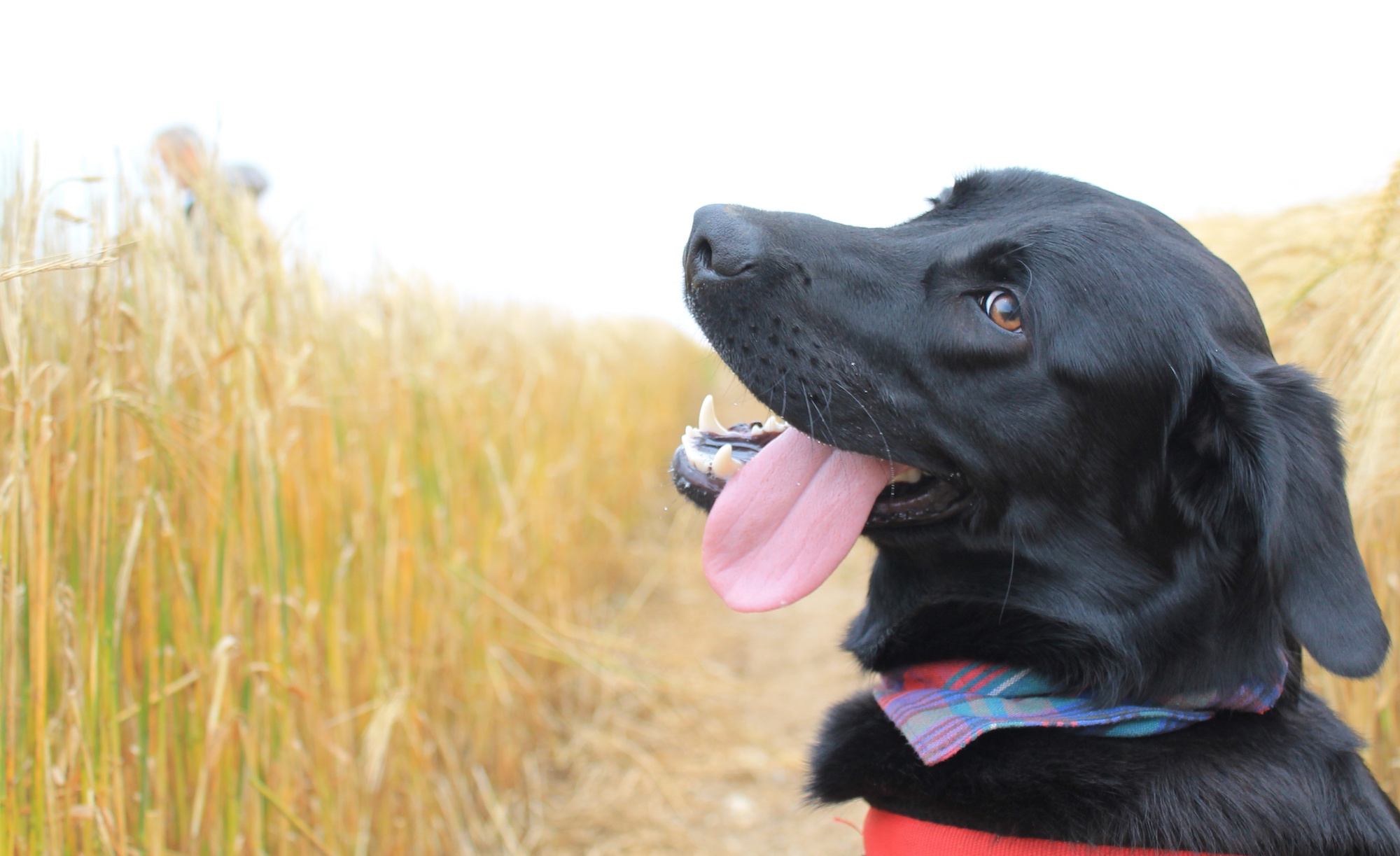Intervertebral disc disease (IVDD) is a degenerative condition that can cause dogs pain and sometimes paralyze them.
Intervertebral discs are pillow-like pieces of cartilage and other tissue that sit between vertebrae—the individual bones of the spine. They help the spine move around and absorb impacts. In dogs with IVDD, these discs rupture (or herniate). The disease can progress quickly, so it’s important to know the signs and what you should do if you suspect that your dog is suffering from it.
The idea of seeing your dog in pain, or having them lose their mobility, can be scary. But learning more about IVDD can put you in a better position to protect your dog from the condition—and, if it arises, manage it as well as possible.
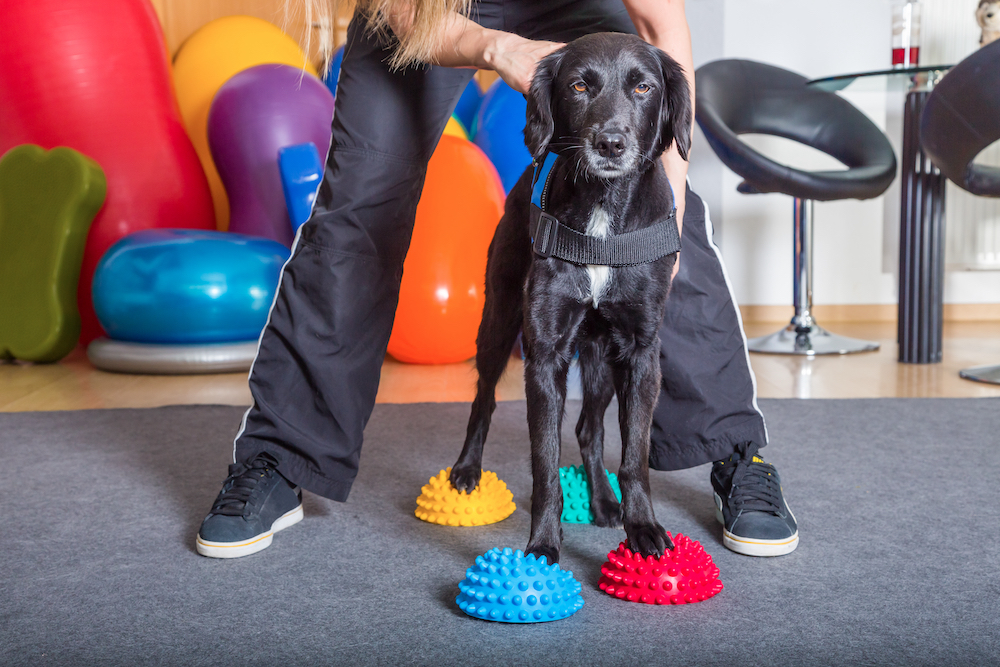
What are the signs of IVDD?
A dog with IVDD may alter their stride, swaying while they walk. They may hesitate to move around as much as they usually do, hunch or arch their neck or back, or yelp in pain. Any of this merits a visit to the vet as soon as you’re able to get there—but if your dog still has full control and use of their limbs, is eating and going to the bathroom, and doesn’t seem to be in a lot of pain, you can talk to your regular vet, explain the situation, and make an appointment for an agreeable time.
If your pup starts to drag their hind limbs behind them, call a vet immediately and rush your dog there. Getting prompt treatment can vastly improve a dog’s prognosis.
Jonathan S. Block, DVM, founder of West Delray Veterinary in Florida, says that humans should take any change in their dogs’ limb function seriously. “Even if they are able to move [their legs],” he says, “but suddenly are walking like a drunken sailor, acute change in limb function or loss of limb function is an emergency.” In such cases, the spinal cord is being compressed. “Time is of the essence,” he says. “If you wait too long… the effects of the spinal cord compression can be permanent.” You’re better off safe than sorry, so seek veterinary care as soon as you can. If you notice these signs after hours, seek an emergency vet.
How serious is IVDD?
It depends. A mild case of IVDD may resolve with rest and medication, but a severe case is a medical emergency that could cause permanent paralysis. The best thing you can do if you suspect the disease is consult a veterinarian and discuss how to treat your dog.

How will a veterinarian diagnose IVDD?
If a vet suspects IVDD based on the signs you’ve described, they’ll perform a neurological examination during which they’ll try to localize where in the spine the dog’s disc may have moved out of place. Dr. Block says that observing a dog’s body in this examination can help a vet figure out where the problem is. “If a disc is herniated in [certain] spots,” he explains, “it will typically present with a classical set of symptoms.”
Depending on the dog’s condition and the results of this examination, the vet may also perform X-rays to aid in the diagnosis, and additional imaging tests like an MRI or a CT scan with contrast may be useful in some cases. The doctor may also test the dog’s cerebrospinal fluid to look for more information about what’s causing their issues.
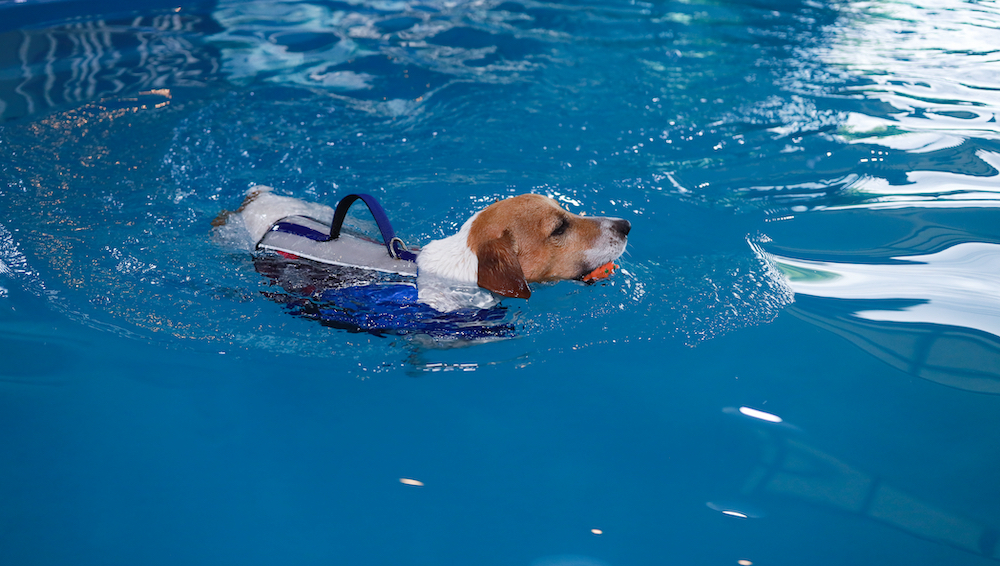
How is IVDD treated?
Dogs with IVDD require different types of treatment depending on their individual circumstances. They don’t always need surgery. Sometimes, with a mild case, crate rest, pain relievers, and anti-inflammatory drugs can be enough to get your dog back to normal.
“Surgery should always be the last option. If there is a path of medical management, physical therapy, or rest and time, that should be attempted as long as it’s in the best interest of the patient,” says Dr. Block. “If we’re not dealing with severe loss of limb function, unmanageable pain, or paralysis,” he continues, “medical management is appropriate.” In the right circumstances, and if everyone remains dedicated to following a strict regimen, crate rest and medication can give the dog’s spine a chance to heal without any further intervention.
Medical management may be less involved than surgery, but that doesn’t mean it’s easy. Around four weeks of crate rest is the usual recommendation, which means that your dog will be confined except for breaks to urinate and defecate. Because you can’t explain to a dog why they need to rest, it can be challenging to keep them calm while they’re confined. If your dog has trouble tolerating the long period of rest, a vet may recommend drugs to calm them down. Dr. Block notes that some of the pain medications used during bouts of IVDD may also make a dog feel tired.
It’s no one’s first choice to put their dog through surgery. It’s expensive. The recovery is arduous, taking six to eight weeks. And, like any invasive procedure, the surgery entails risks. But sometimes it’s the only way to return a dog to a comfortable life. And, in some severe cases, the decision to go with surgery must be made quickly. For example, a vet may recommend going through with the procedure while a dog is already sedated for a scan.
The good news here is that surgery to correct IVDD usually works, meaning that a dog can return to what Dr. Block calls a “functionally independent” existence after the procedure and physical therapy. Dogs may show some lingering signs that they’ve had back problems even after a successful procedure, but should be able to happily go about their day-to-day lives.
During the surgery, a veterinarian will remove the herniated disc material. This should relieve the compression in the spinal cord and re-establish normal blood flow so the body can mend. Some vets may also make small fenestrations—or windows—elsewhere in the spine in order to make recurrence less likely. Talk to your veterinarian about the specifics of the procedure; what they do will depend on your dog’s circumstances.
If your dog does get surgery, part of their recovery will be physical therapy. Even dogs with milder cases can benefit from exercises that can strengthen their back muscles, helping them heal and reducing their pain. You may perform these exercises in a vet’s office or at home according to their instructions, but consult with a professional before trying them. “Exercises that might be helpful for some dogs may even be dangerous for other dogs,” Dr. Block explains, “depending on where they are in their recovery.”
Hydrotherapy can be good for dogs with IVDD, too. But the same caveat applies here as with other exercises: talk to your vet first. Dr. Block warns that, for dogs with IVDD, swimming can actually cause further damage to the spine. As you work to get your dog back up to full strength, be sure to rely on experts’ advice.
A dog’s treatment may result in their being stable, but still paralyzed. In those cases, they may use a wheelchair to remain mobile without the full use of their limbs.
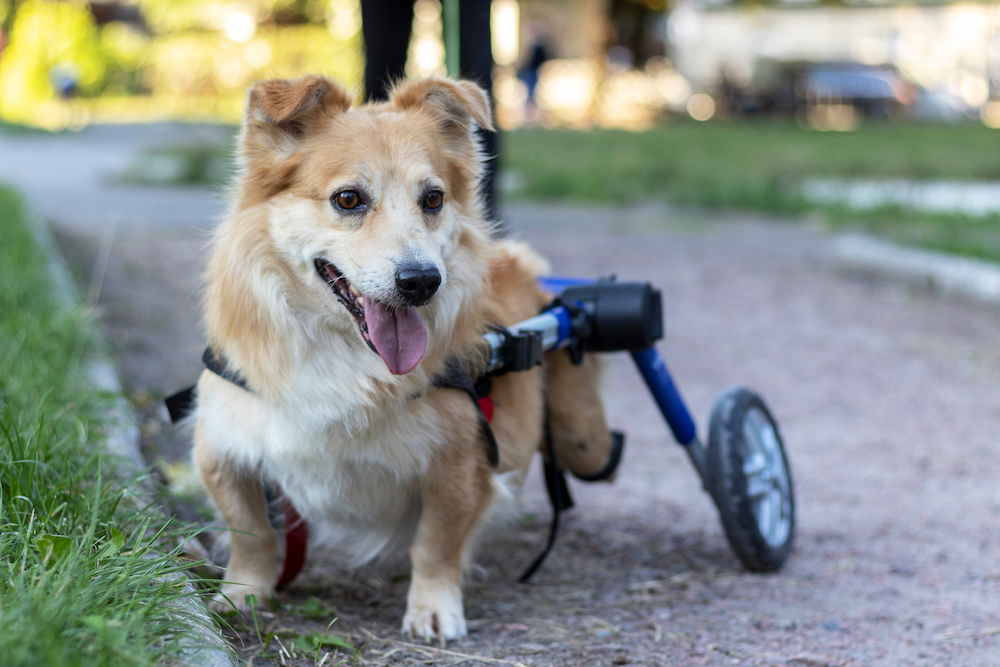
Which dogs are most vulnerable to IVDD?
While any dog can suffer from IVDD, certain dogs are in more danger. Dachshunds are the most susceptible—up to 24% of dachshunds show signs of the condition at some point in their lives. And Dr. Block says that, these days, he sees just about as many French bulldogs with IVDD. He mentions Boston terriers, pugs, Shih Tzus, and Lhasa apsos as other dogs who may be especially vulnerable to the illness. In general, vets and other experts believe that chondrodystrophic dogs—those whose breeding produces short legs and long bodies, a group that includes beagles, corgis, and other breeds as well as dachshunds—are at a higher risk for problems like IVDD.
There is also a Type II IVDD that’s more likely to affect larger, older dogs with longer legs. But, like Type I, it can afflict any dog.
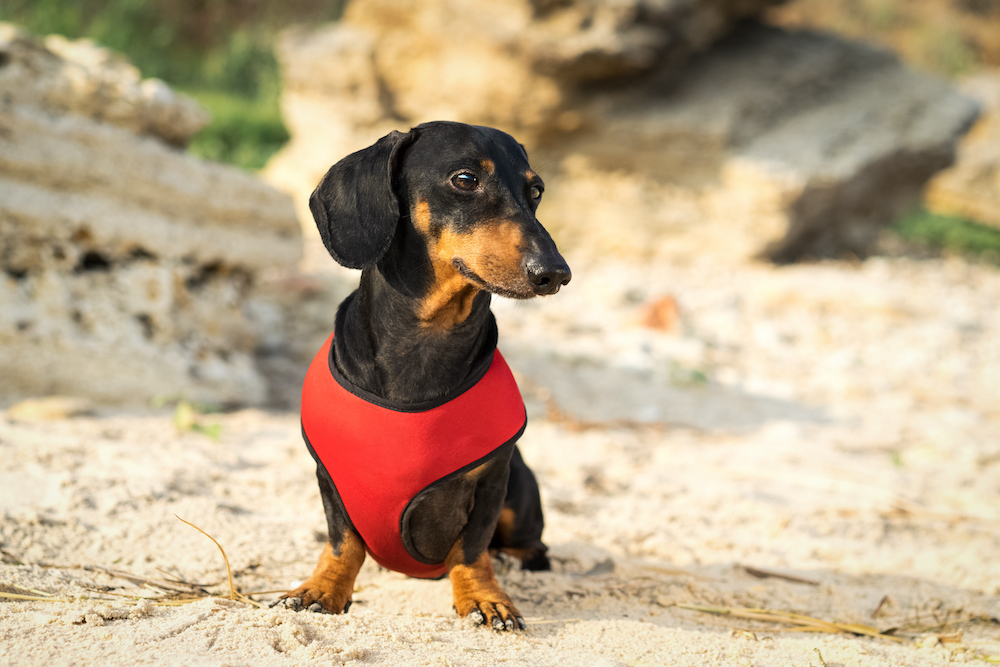
What causes IVDD, and how can I prevent it?
The immediate cause of IVDD can sometimes be, or seem to be, an injury—but, as noted above, genetics are a powerful factor. And there is nothing you can do to guarantee that your dog will never develop IVDD. “Sometimes, despite our best preventative efforts, these things do happen,” says Dr. Block. But you can take precautions to reduce your dog’s risk.
One of the simplest steps you can take to protect your dog is to keep them at a healthy body weight. Extra weight puts more strain on the spine, making herniated discs more likely. Give your pup enough physical activity and feed them an appropriate amount of complete and balanced food.
“We want to allow dogs to be dogs,” Dr. Block says, and part of that is “a happy, active lifestyle.” But if your dog is a member of a breed that’s particularly vulnerable to IVDD, he says it’s prudent to avoid certain dangerous activities. For example, you shouldn’t let high-risk dogs jump off of furniture or climb stairs. “The thing about dachshunds and other short-legged dogs,” says Dr. Block, “is that when they go up stairs they typically have to run. They’re too small to take one step at a time. So in order for them to get up stairs, it’s like a full-on gallop where there’s flexion and extension of the spinal cord.” Jumping up high—to catch a ball or frisbee way up in the air, for example, and landing on the ground with a big impact—can also be harmful for dogs prone to the condition.
Some vets recommend walking dogs at a high risk of IVDD on a harness rather than a collar. Making sure that your dog isn’t pulling during walks, putting extra pressure on their neck or back, is a must.
If you have a long-bodied dog who you know is going to be stepping onto and off of furniture, consider getting ramps and training your dog to use them so that they don’t take leaps that could hurt their spines.
You should also practice proper technique when picking your dog up, ensuring that you give their spine adequate support. For tips, check out our guide.
If you have the money in your budget, it’s a good idea to consider pet insurance or start a bank account with funds you set aside for medical treatment; this goes for any dog. Surgery for dogs with serious IVDD cases is costly, and it’s stressful enough to face a health crisis for your pup without worrying about whether you can afford their treatment.
